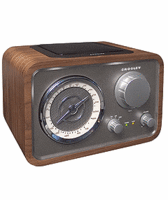Senator Ted Kennedy woke up today feeling ill. First report was that he had a Stoke. He has risks factors for a Stroke per foxnews including high blood pressure, high cholesterol, is overwieght and removal of atherosclerotic plaque from his one of his carodtid arteries last fall. There are 2 types of stokes Hemorrhagic(bleeding type) and Ischemic type(blockage type from either a Atherosclerotic "fatty cholesterol" plaques that break off and cause a Brain Attack similar to a Heart Attack). There is a family history of Strokes both father(Joe Sr.) and mother(Rose) had strokes(Brain Attack types) which are re due to hereditary conditions. Additionally Senator Kennedy has been overweight for years. He underwent an Endarterectomy in October to remove a Fatty Plaque from his one of his Carotid Arteries. Now the Press is stating he had a seizure while walking his dog and 911 was called. He spent 2 hours at the Cape Cod Hospital which is means that it may not have been a Stroke(Brain Attack) type because treatment for this has to be initiated with 2 hrs while block busting drug treatment known as t-PA(Tissue Plasmogen Activator). -
Fibrinolytic therapy(Thrombus-fatty plaque-and Emolic-Clot busting): Intravenous t-PA for appropriate patients within 3 hours from symptom onset remains a Class I recommendation by the American Stroke Association. A recent re-analysis of the original NINDS data reaffirmed the original findings. Similarly, a meta-analysis of published t-PA use demonstrated efficacy and safety comparable to that of the original NINDS trial.1 See Stroke Team Creation and Management Causes of Seizures in addition to an Ischemic "Brain Attack" type Stroke are listed below. Seizures are not a good pronosticator given Senator Kennedy's age. Stroke is characterized by the sudden loss of blood circulation to an area of the brain, resulting in a corresponding loss of neurologic function. Also called cerebrovascular accident or stroke syndrome, stroke is a nonspecific term encompassing a heterogeneous group of pathophysiologic causes, including thrombosis, embolism, and hemorrhage. Strokes currently are broadly classified as either hemorrhagic or ischemic. Acute ischemic stroke refers to strokes caused by thrombosis or embolism and accounts for 85% of all strokes. Approximately 705,000 strokes occur each year, including both new and recurrent cases. Of these strokes, approximately 625,000 are ischemic strokes. Currently, more than 4.4 million people in the United States are stroke survivors. - Stroke is the third leading cause of death in the United States (60.2 per 100,000), following cardiac and cancer-related deaths. Approximately 29% of patients die within 1 year following a stroke; this percentage rises in patients older than 65 years. Worldwide in 1990, more than 4.3 million people died of cerebrovascular disorders.
-
- Stroke is the leading cause of disability in the United States; 31% of stroke survivors assistance with daily living, 20% need some type of assistance for walking, and 16% require admission to a long-term care facility. Furthermore, at least one third of stroke survivors have depression as well as many of their care providers.
-
- The direct costs (ie, treatment) and indirect costs (ie, lost productivity) of stroke in the United States are approximately $43 billion/year.
Epileptic seizures area manifestation of neurologic or metabolic diseases. Epileptic seizures have many causes, including a genetic predisposition for certain seizures, head trauma, stroke,brain tumors, alcohol or drug withdrawal, and other conditions. Epilepsy is a medical condition with recurrent, unprovoked seizures. Therefore, repeated seizures due to alcohol withdrawal are not epilepsy. The causes of most epileptic syndromes are described in several articles of the eMedicine journal, such as those listed below. Seizures are paroxysmal manifestations of the electrical properties of the cerebral cortex. A seizure results when a sudden imbalance occurs between the excitatory and inhibitory forces within the network of cortical neurons in favor of a sudden-onset net excitation. If the affected cortical network is in the visual cortex, the clinical manifestations are visual phenomena. Other affected areas of primary cortex give rise to sensory, gustatory, or motor manifestations. The pathophysiology of partial-onset seizures differs from the mechanisms underlying generalized-onset seizures. Overall, cellular excitability is increased, but the mechanisms of synchronization appear to substantially differ and are therefore discussed separately. |




0 Comments:
Post a Comment
<< Home